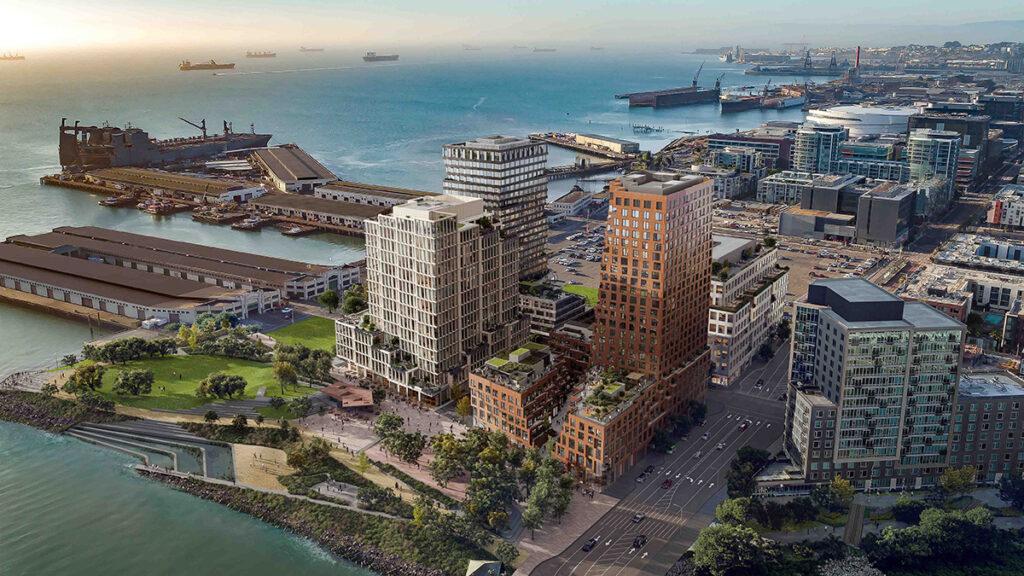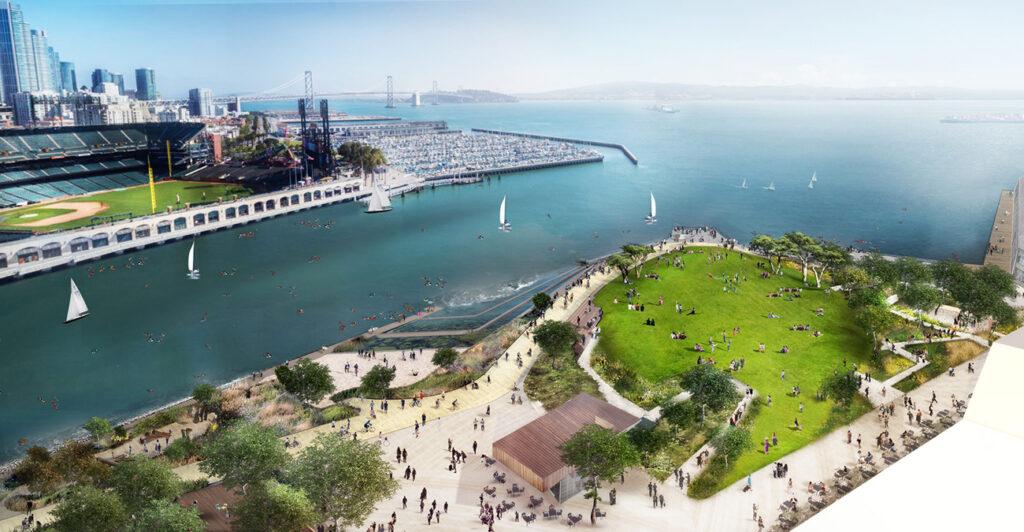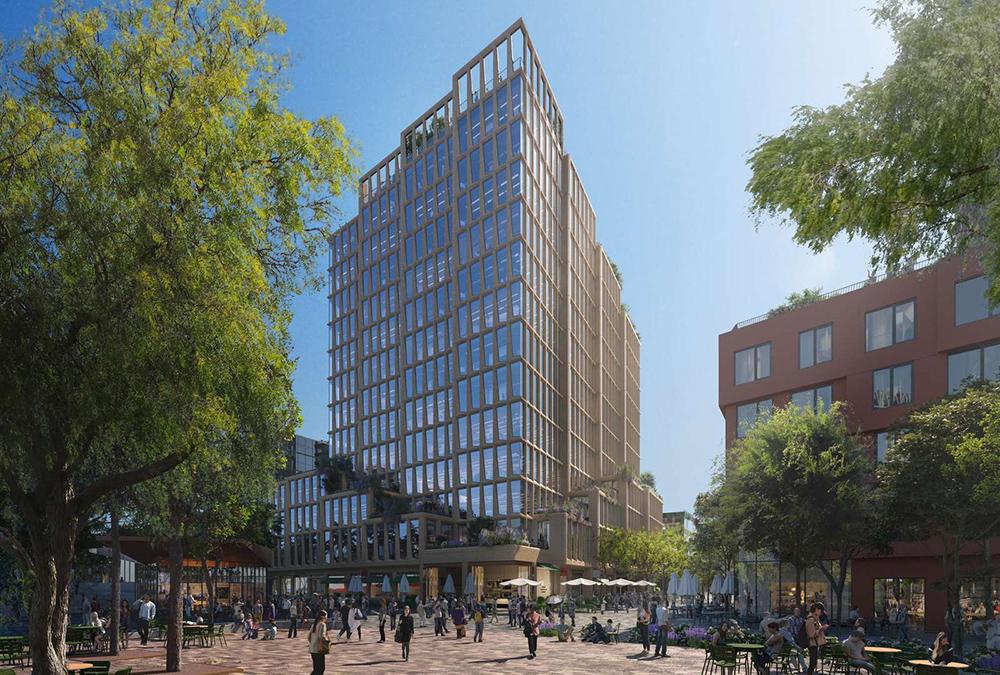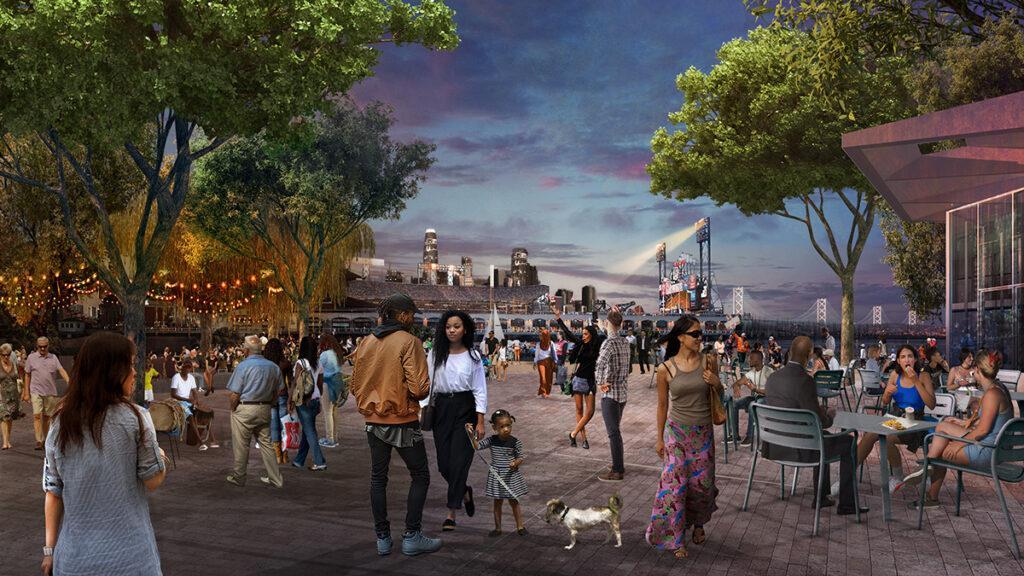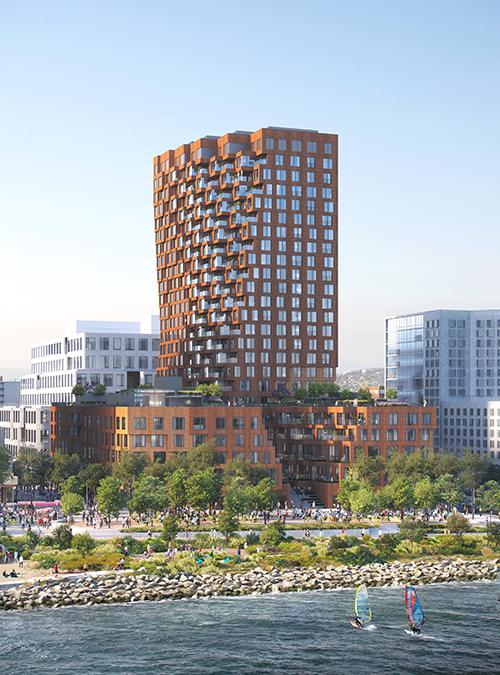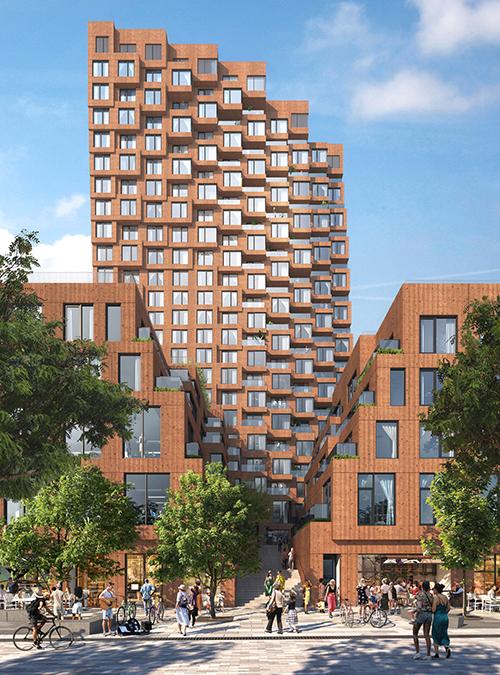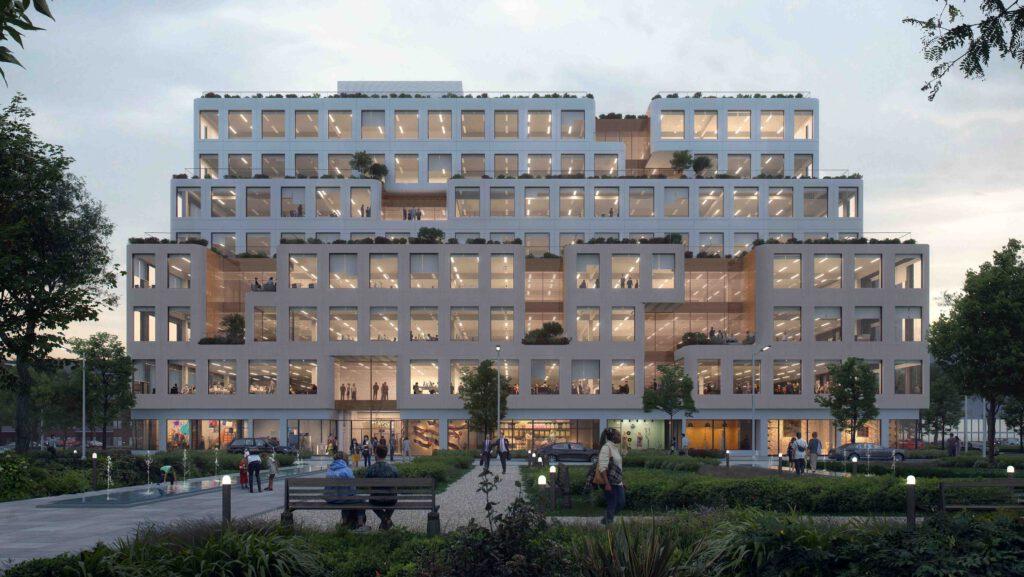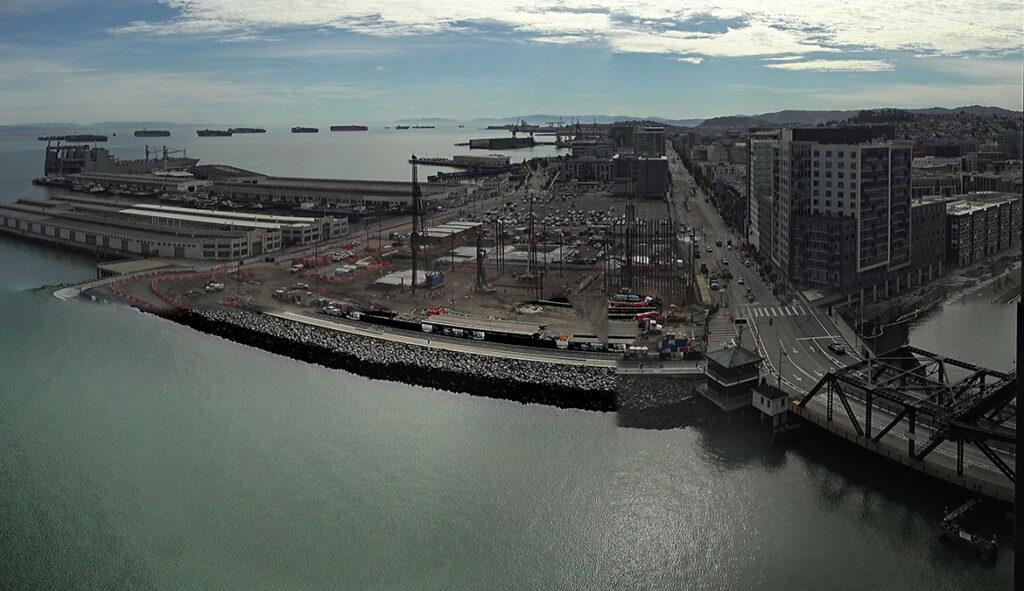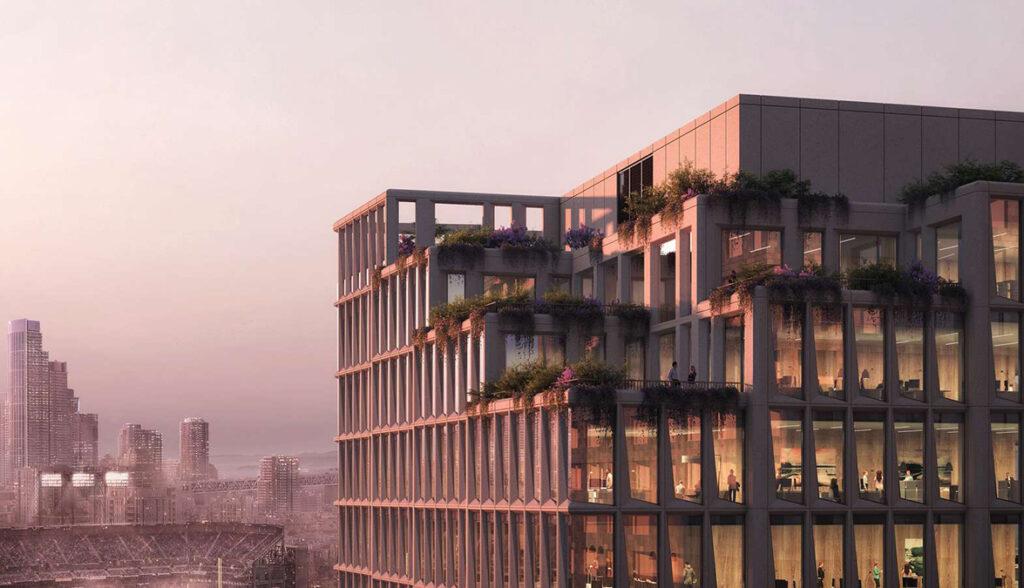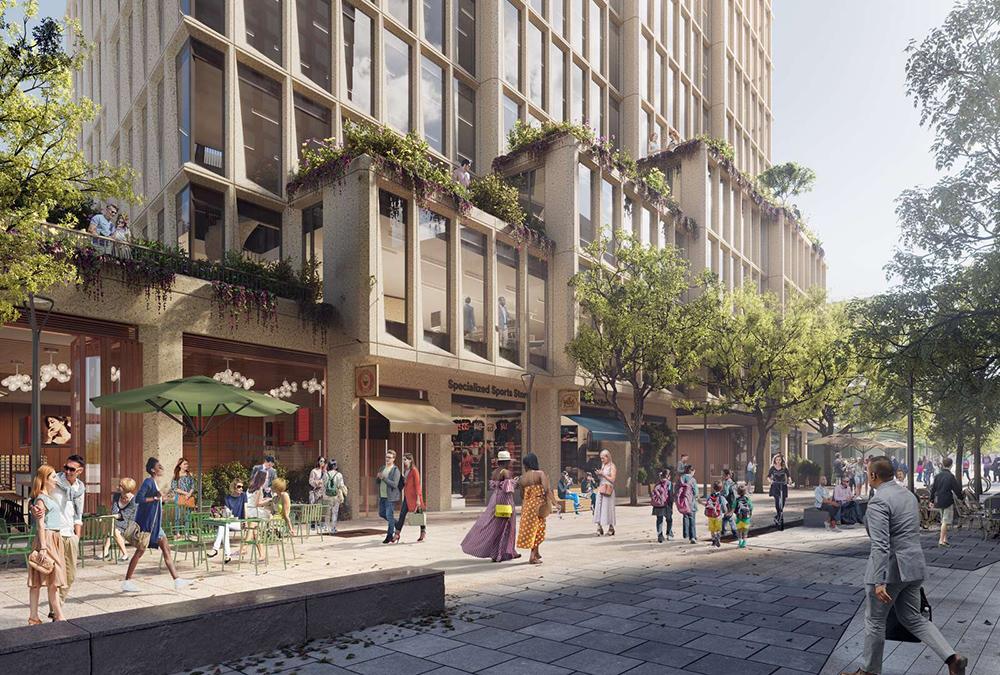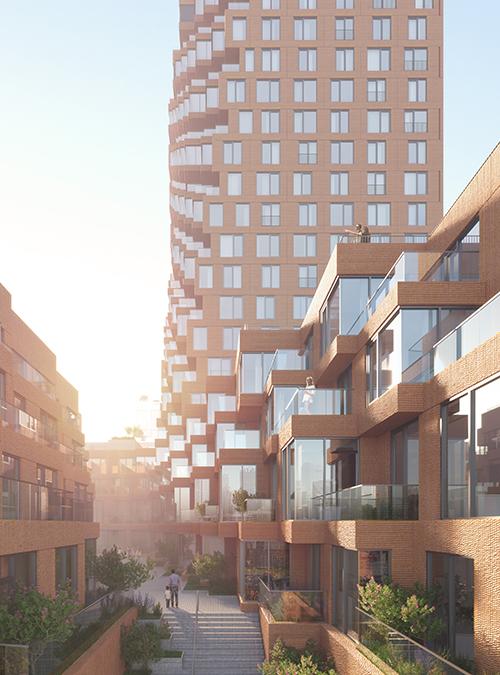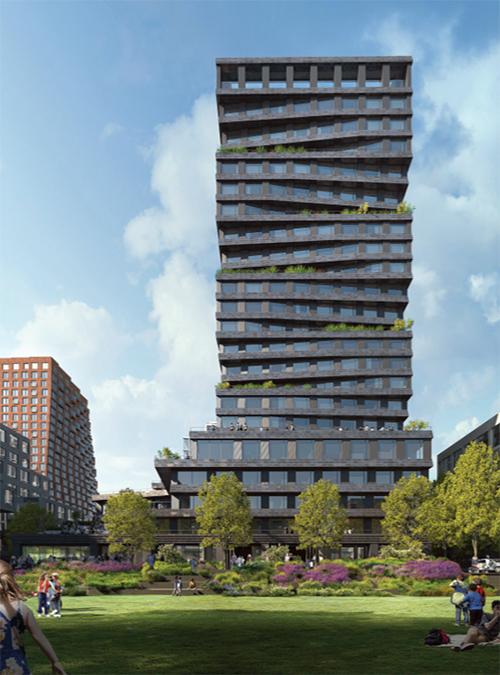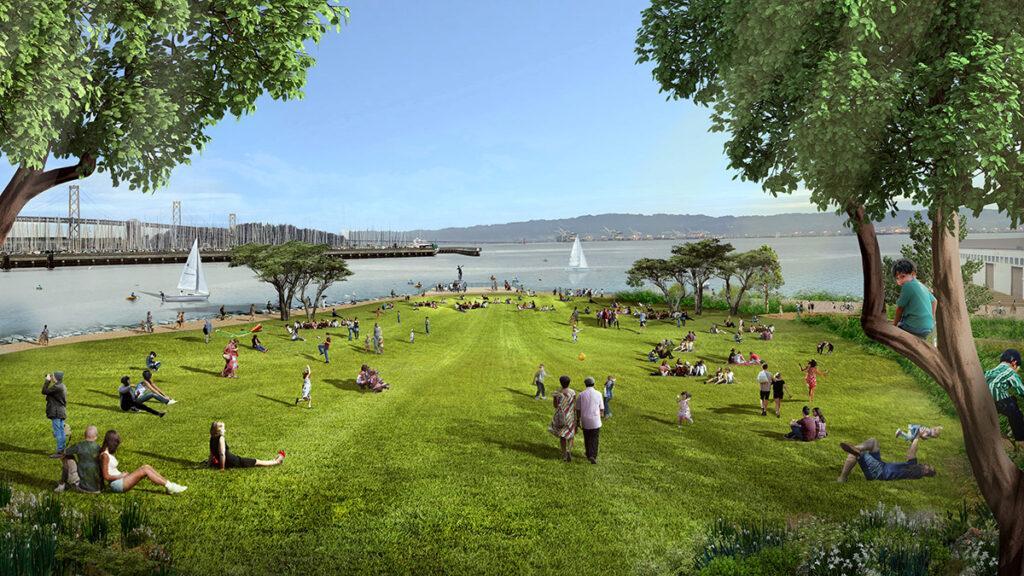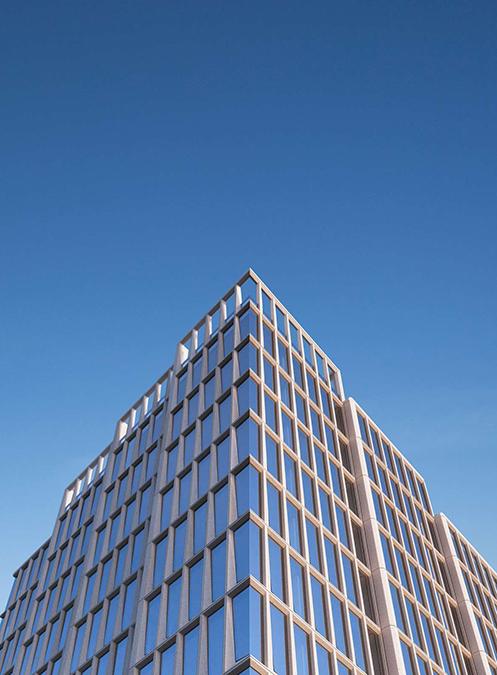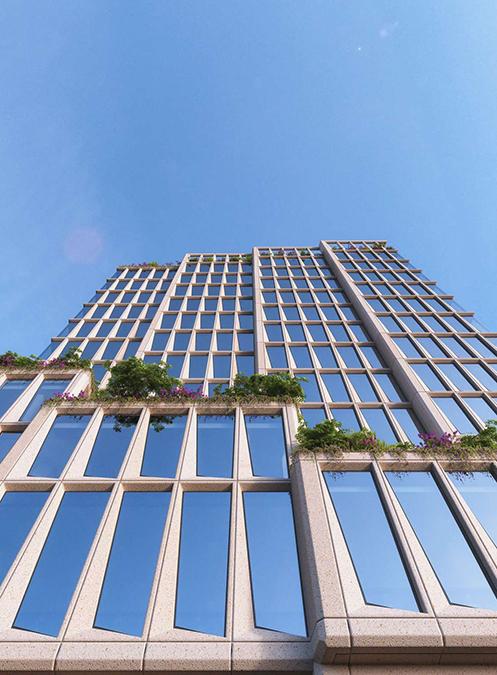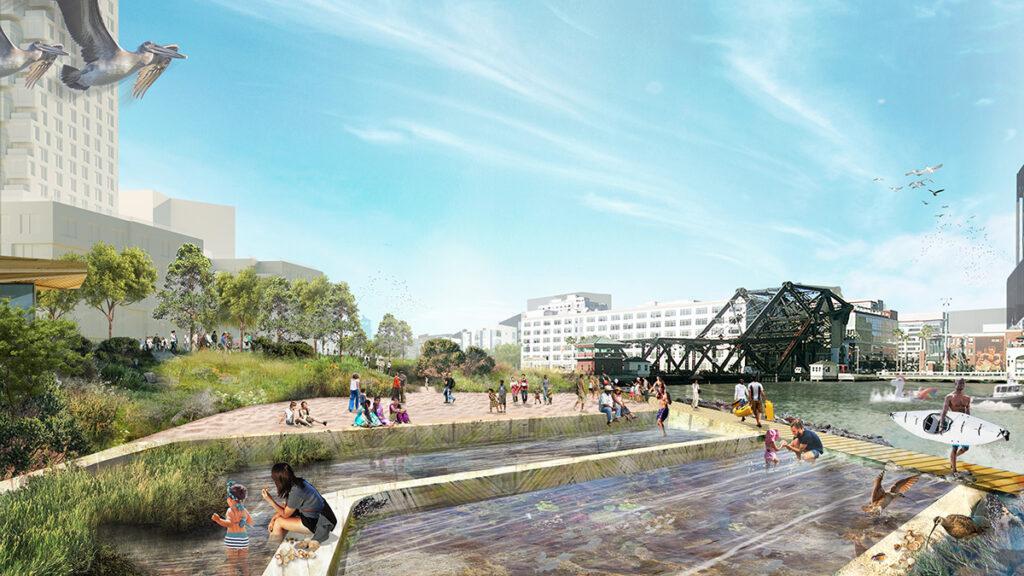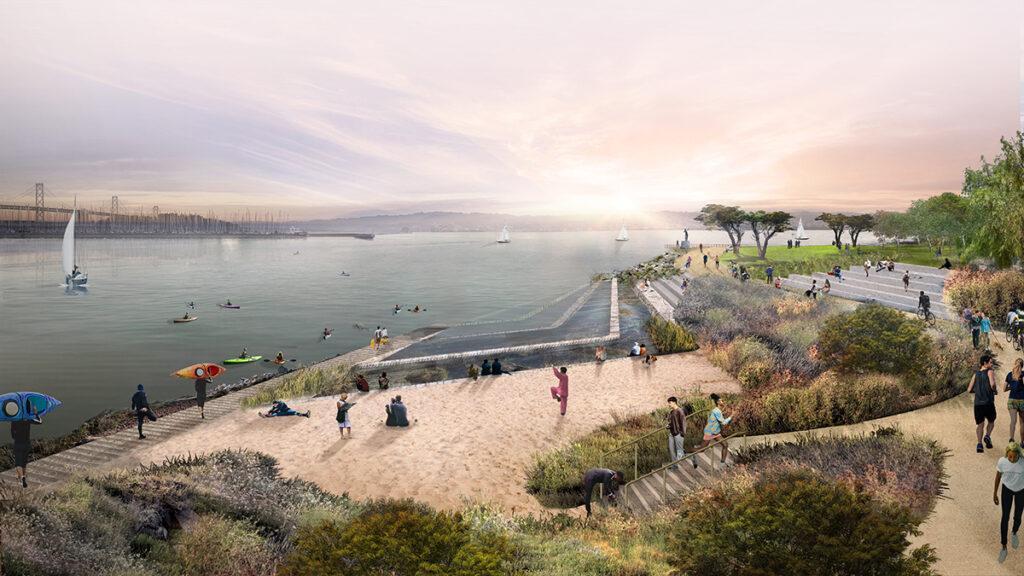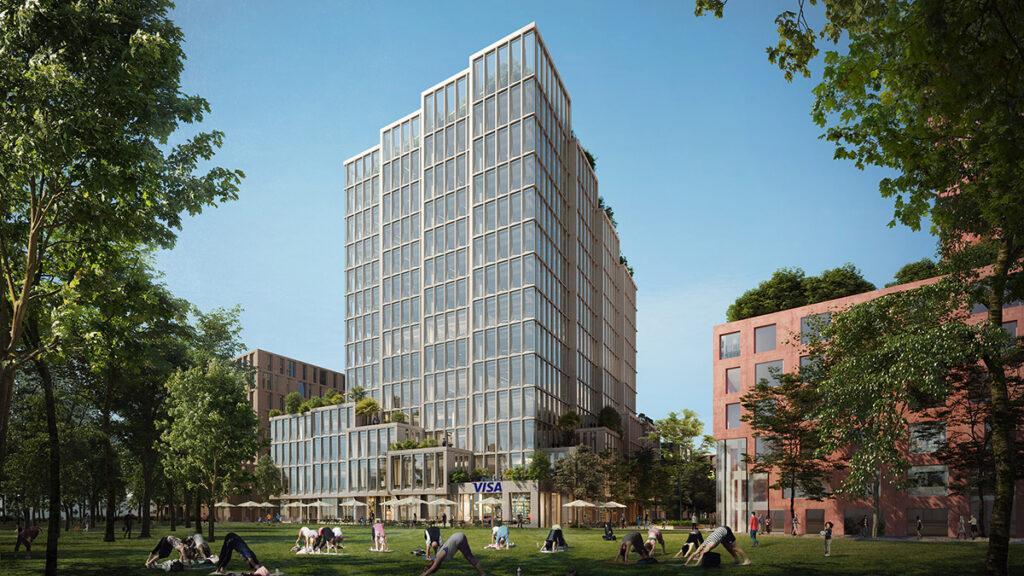Mission Rock rocks San Francisco
Dreams are coming true in San Francisco, where eleven hectares of bleak asphalt are being transformed into a stunning, lively city district called Mission Rock. The project is driven forward by world-class architects with a shared vision.
If you’ve ever taken a trip to San Francisco, you’ve almost certainly fallen in love with beautiful San Francisco Bay. And if you live in the city and you like baseball, you’re probably a Giants fan. What’s more, if you enjoy watching live games at Oracle Park, the team’s home stadium, chances are you’ve parked your car where a new city district is now being built. The project, Mission Rock, will transform the eleven hectares of asphalt and parking spaces across from the sports arena into a modern mixed-use district. Located directly on the waterfront, this sustainable urban development will offer an abundance of public green spaces, affordable housing and a refreshingly wide range of services.
Endless planning finally pays off
Much of the credit for this future-ready, colourful neighbourhood in the China Basin goes to the San Francisco Giants. As one of the key developers of Mission Rock, the baseball franchise has teamed up with the real estate company Tishman Speyer and the Port of San Francisco. On-site construction work has already begun, meaning that this exciting project has finally entered Phase One. And not a moment too soon: the planning process already started back in 2007.
If everything goes according to plan, the first Mission Rock phase will be completed in 2023-2024. And a glance at the plans and renderings clearly shows that this will be an event to be celebrated – for San Francisco, its citizens and all visitors to the beautiful “City by the Bay”.
Great expectations
The project aims to create public open spaces, housing and jobs. Furthermore, historic Pier 48, a popular event location, will be redeveloped. As described on the project website: “This will be the place to live, connect, do business, meet up, get active, relax and chase dreams…”.
This vision convinced 74 percent of San Francisco voters to give the go-ahead for the project. And however it turns out, Mission Rock will ensure a high degree of diversity.
Attractive and affordable housing
Plans call for 32,000 square metres of green space suitable for pedestrians and cyclists. Forty percent of the up to 1,600 new apartments will be reserved for low- and middle-income families. There are also plans for roughly 130,000 square metres of modern office space and around 23,000 square metres for restaurants and shops.
Public spaces will be created among and around Mission Rock’s new buildings – spaces that will seamlessly merge with the planned, expansive China Basin Park near Oracle Park. The first phase of the project comprises four complexes consisting of two residential and two commercial buildings.
A boost for the local economy
Construction on the site between Mission Creek and San Francisco Bay is expected to generate approx. 13,500 jobs. Mission Rock is also expected to provide permanent jobs for some 7,000 people.
A team of internationally renowned architects guarantees outstanding designs. And a truly illustrious group is collaborating to create this new city district.
Teaming up with a common goal
Building A was designed by the Dutch firm MVRDV – with support from Perry Architects and GLS landscape architects. WORKac delivered the plans for Building B and brought on board Adamson Associates and Y.A. Studio. Studio Gang designed Building F and brought in Quezada Architecture. SCAPE designed China Basin Park. And the Danish architectural firm Henning Larsen planned Building G, with Adamson Associates and Y.A. Studio as partners.
It is a rare opportunity to collaborate with world-class architects as a team right from the very onset of a project to create more than just eye-catching architecture.
The Mission Rock project team
For the design of Building A, MVRDV drew inspiration from the topography of Californian landscapes. The 23-storey, approximately 73-metre-high building features a combination of low and high elements that form a narrow valley running between steep rocky walls. This “canyon” will extend from China Basin Park into Building A to generate a lush, lively space.
Green and sustainable
Building A will be constructed next to the “Handshake Plaza”, which serves as Mission Rock’s entrance via the 3rd Street Bridge. Undulating balconies stretch up to the building’s western facades while overhangs on each floor create vibrant terraces. The building will feature roughly 37,000 square metres of space for apartments, offices, shops and a private lobby. Designed with sustainability in mind, Building A is expected to receive LEED Gold certification. The building’s external space will be awash with greenery in the canyon and on the residential balconies all the way up to the roofs.
Building B is also inspired by the natural setting of San Francisco. The architects at WORKac have designed it to be elegant and bright, with adaptable workspaces that offer access to terraces. The office complex will have a gross area of some 28,000 square metres and will be “layered”, so to speak, with elements of these structures forming the terraces. These layers will also be connected vertically by gardens that serve as outdoor meeting rooms for employees.
Inspired by nature
The northernmost block of the Mission Rock master plan was designed by Henning Larsen. His award-winning Danish architectural firm found inspiration in nature for Building G, a 13-storey tower that echoes the legendary basalt columns of Devils Postpile National Monument, near Yosemite National Park. The general massing of the office building is broken up by smaller volumes of different widths. At street level, this staggered structure mirrors the dimensions of a typical San Francisco neighbourhood.
Densely planted terraces add striking accents to the gridded facade. Perched one above the other, they serve as a visual extension of China Basin Park. On the fifth floor, a spacious terrace wraps around the entire tower.
A highlight on the roof
The Henning Larsen team has come up with something special for the rooftop level: the top of the building slopes towards the south-west to create large, wind-protected, sunny terraces with views of Mission Rock Square. The uppermost of these outdoor areas opens onto a north-facing rooftop lounge. This provides a magnificent vista of Oracle Park, the Bay and the surrounding city. Visitors can comfortably enjoy the panorama under the protection of a crown that peaks at the north-western corner of the tower.
A feel-good environment
Building G will mainly provide office space, but will also have shops, restaurants and a lobby for residents. The interior will offer flexible, column-free floor plans for a modern working environment, with a high degree of connectivity, spacious communal areas, direct access to outdoor areas and planted terraces. The sand-coloured prefabricated facade imbues this Mission Rock building with a feeling of warmth and texture.
Building F will be located in the heart of Mission Rock. It was designed by the renowned US firm Studio Gang in association with Quezada Architecture. The 23-storey residential complex is located north of the main public space, Mission Rock Square, which was conceived as a central hub and community gathering space. The building’s base is carved with steps leading up to a mesa-like space with sunny planted terraces and raked seating, where people are welcome to linger. On the ground floor, shops and cafés will create a hive of activity.
Sunny and sheltered from the wind
The sculpting strategy continues up the tower, where floorplates are carved back at the corners to create comfortable outdoor terraces that complement San Francisco’s indoor-outdoor lifestyle, according to the designers. These open spaces are oriented and shaped to maximize sunlight and minimize wind. They also provide great views of Mission Rock, the city and the Bay. Terracotta cladding with subtle variations in colour and profile will lend Building F a friendly, inviting look.
The top level of this Mission Rock building is designed to provide space where residents can relax and socialize. Views of the city and the Bay can be enjoyed from a magnificent roof-top garden. Studio Gang is also targeting LEED certification.
Promoting biodiversity
Plantings with local vegetation are used to attract birds, butterflies and other pollinators. In addition to providing an appealing setting for people, Mission Rock aims to promote biodiversity by creating an inviting habitat for animals.
The four Mission Rock buildings will combine to create the harmonious mix that the project team has been aiming for right from the start. The ambitious objective is to create a unique urban district – a new neighbourhood that feels like it could only be in San Francisco, but is unlike anything San Francisco has ever seen before.
An exceptional collaboration
To achieve this, the Mission Rock team assembled a team of world-renowned architects to collaboratively design the buildings for Phase One of the project. In doing so, they created an “anti-master-plan master plan” where each building will have its own distinct appearance and feel, but will also complement one another and the surrounding environment.
The architectural teams forming the design cohort came together in true studio fashion to discover, share and collaborate. This led to the creation of a project that reflects the community’s ambitious vision, based on clearly defined core values: Mission Rock has to suit its location and its neighbours, yet also offer a unique all-round experience. “Design quality” is a key attribute.
For people and the environment
The district is designed to be “a beautiful, functional, considered and equitable place”. Every aspect of the project is tailored to help build and strengthen the community. And Mission Rock must embrace the natural environment – with ample public space inside and outside.
The challenge was to design the ground plane to connect blocks and expand the public realm. The Mission Rock towers were shaped to optimize views and create memorable collective silhouettes. Last but not least, meticulous attention was paid to the Bay Area’s climate and ecosystem. After all, sustainability and maximum quality of life are the clients’ focal areas.
Thanks to the extraordinary collaboration of renowned architectural firms, the Mission Rock developers can draw upon a wealth of relevant experience. For instance, Henning Larsen is known for innovative urban projects like Fælledby in Copenhagen and the Place de Brouckére in Brussels. The same applies to MVRDV, which recently made quite an impression with its concept for Nieuw Bergen in Eindhoven by combining old and new as well as urban and natural elements. The award-winning Studio Gang, WORKac and all co-designers also offer the highest level of expertise.
Vitality and versatility
San Francisco can look forward to a magnificent, future-fit new district – one that exudes as much vitality and versatility as the legendary “City by the Bay” itself.
Text: Elisabeth Schneyder
Translation: Rosemary Bridger-Lippe
Images: MVRDV, Henning Larsen / Taras Baran, Studio Gang, SCAPE, Tishman Speyer, Pixelflakes, Binyan Studios, Rinaldi Group LLC
